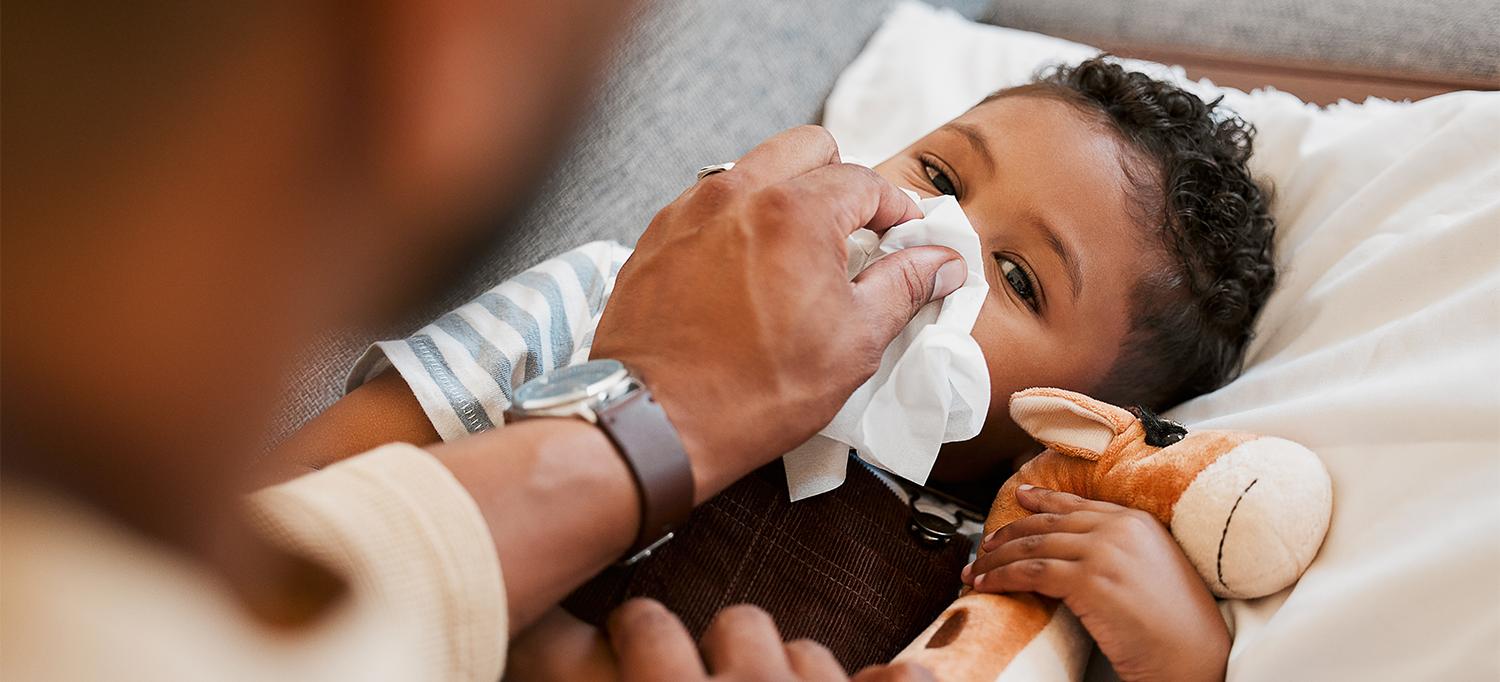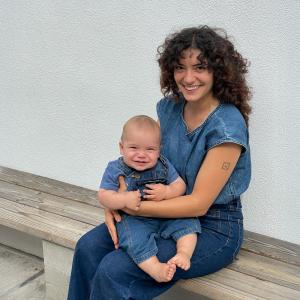
Photo: PeopleImages/Getty
It’s that time of year: Winter is prime time for kids to pick up all sorts of respiratory infections, including flu, respiratory syncytial virus (RSV), COVID-19, and the common cold. They sniffle, sneeze, and cough, and as a parent, all you want is to help them feel better—and be sure you are giving them the appropriate medical care.
So how do you to know if your child needs to see a doctor? Arun Chopra, MD, pediatric service chief at Hassenfeld Children’s Hospital at NYU Langone, offers some reassurance: “The good news is that most children who get these respiratory viruses don’t get very sick and can be treated at home.”
Here’s how to care for children with respiratory illnesses, including signs that may indicate a more serious illness, and tips for helping your child recover at home.
Which Is It: A Cold, Flu, RSV, or COVID-19?
Your child is ill, but is it the flu, RSV, COVID-19, or even the common cold? Respiratory illnesses can look alike because the symptoms are all similar: runny nose, sneezing, cough, and fever.
The flu is more likely to cause muscle aches and fever than other viruses. If you suspect that your child has the flu, a trip to the pediatrician is in order, says Dr. Chopra. “There is medication that, if you start treatment within the first 48 hours, can actually decrease the amount of time that your child is sick and protect against serious illness,” he says.
In most children, RSV is a mild illness that resembles the common cold.
If you suspect COVID-19, at-home tests can be safely used on children, and knowing if your child has this virus can help you limit spread in the home and community.
Treating Respiratory Viruses at Home
Respiratory symptoms, including nasal congestion and cough, can make a child feel awful. The good news is that many kids get better with remedies you can easily provide at home.
Clearing Up a Stuffy Nose
“If your child has a very stuffy nose, there are lots of things that you can try,” says Dr. Chopra. First, make sure your child stays hydrated, which can help thin out the mucus. Use a bulb syringe to extract excess mucus from the child’s nostrils. Or clear the nasal passages with an over-the-counter saline spray, which can make it easier to expel or remove mucus.
Clearing out mucus can help your child breathe, but never insert anything deep into the nasal cavity, says Dr. Chopra. Doing so could injure the mucous membranes of the nose, causing irritation and sometimes bleeding.
Calming a Cough
As for that nighttime cough that is keeping your child from getting a good night’s rest? “Coughing actually is good for your child. It helps bring mucus out of the lungs and keep the lungs healthy,” says Dr. Chopra.
Avoid over-the-counter cough and cold medicines for babies and young children, says Dr. Chopra, as they are not that effective and may pose serious side effects. Hydration is key, as that can help loosen phlegm and thin out mucus. An in-room humidifier can help as well, as dry air can irritate the lungs. Acetaminophen can help reduce muscle pain that can occur from coughing.
Easing Fever and Body Aches
The key to managing a fever is keeping your child comfortable. Encourage your child to drink plenty of fluids. Make sure they rest up. And give an over-the-counter infant or children’s fever reducer to ease pain and break a fever. Acetaminophen (Tylenol) is safe for children of all ages, and ibuprofen, sold as Advil or Motrin, can be used in children ages 6 months and older. Only use pediatric versions of these medications, as adult formulations can be dangerous in children under age 12.
A fever in itself is not dangerous for most children, says Dr. Chopra, and so treatment should focus on making your child comfortable. Dressing your child in light clothing can lower a fever, and snuggling up with you or bundling in a favorite blanket or sweater can ease the discomfort of a fever.
When to Seek Medical Care for a Respiratory Illness
Not every sniffle or sneeze requires a trip to the pediatrician, but it is wise to watch for signs of more serious symptoms. Young ones who are having trouble breathing will look like they are “tugging with their muscles to breathe,” says Dr. Chopra, or “pulling in and out with each breath.”
“If you notice that your child is having trouble breathing, or there are any color changes around the mouth or lips, you should bring your child in to be seen immediately—either in urgent care or in the emergency department,” says Dr. Chopra.
Other signs that you should contact your pediatrician include if a child is not eating or drinking as much as usual or you notice that they’re making less-than-normal amounts of urine, says Dr. Chopra. Also consult the pediatrician if your child has chronic lung disease, congenital heart disease, or any other underlying condition that affects the immune system.
But overall, most respiratory illnesses will run their course and can be treated safely at home.
“Children generally do very, very well with these infections and get better,” says Dr. Chopra. “Focus on making your child comfortable as they recover, and do not hesitate to contact your pediatrician if you have concerns.”
NYU Langone can help you find a pediatrician, and Virtual Urgent Care is available for children ages 5 and older. A parent or legal guardian may schedule a video visit with an NYU Langone provider at a time that works for them. It can be a good option when a child has a cough, mild fever, or other non-emergency need.

